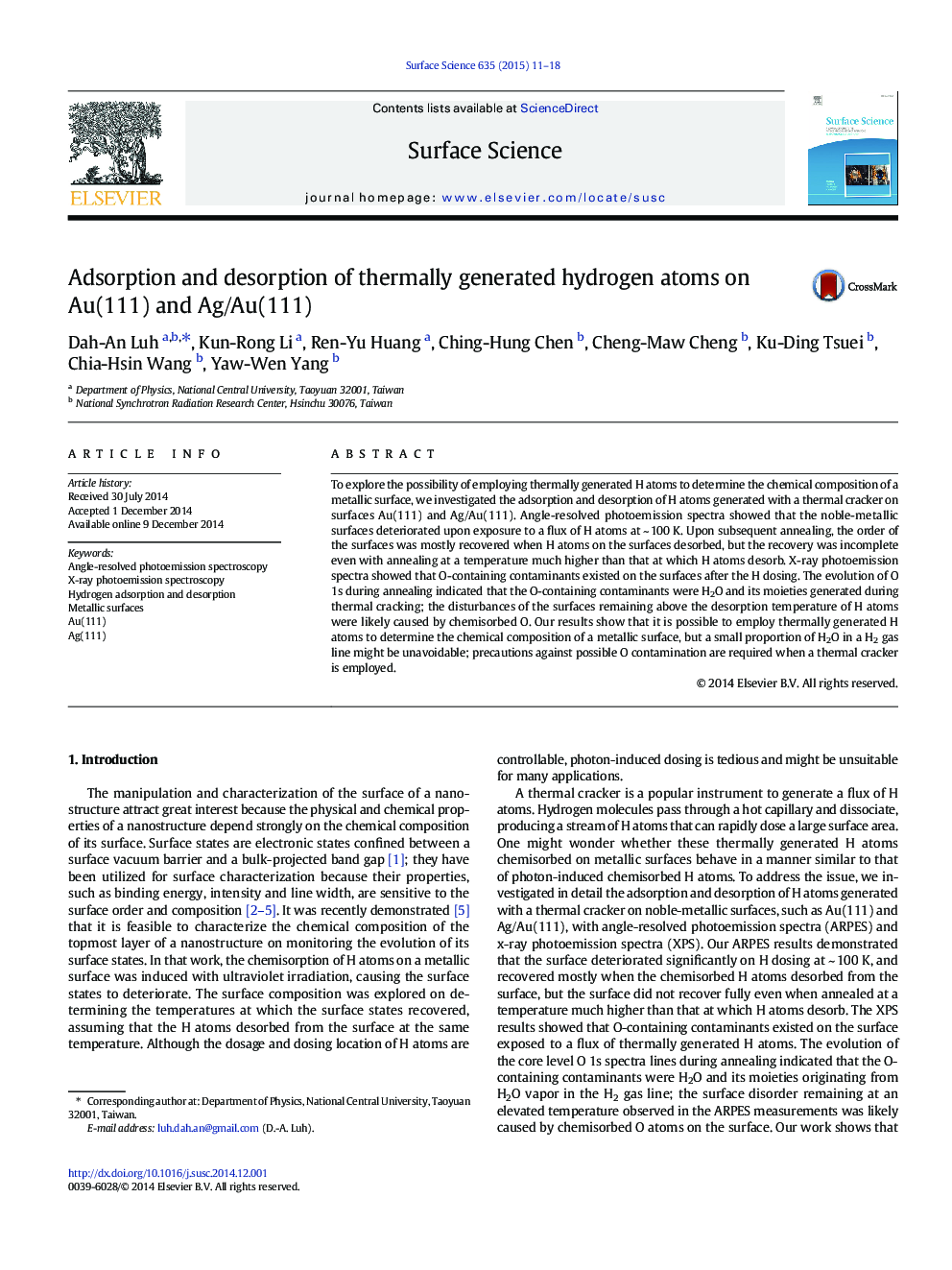| Article ID | Journal | Published Year | Pages | File Type |
|---|---|---|---|---|
| 5421805 | Surface Science | 2015 | 8 Pages |
Abstract
To explore the possibility of employing thermally generated H atoms to determine the chemical composition of a metallic surface, we investigated the adsorption and desorption of H atoms generated with a thermal cracker on surfaces Au(111) and Ag/Au(111). Angle-resolved photoemission spectra showed that the noble-metallic surfaces deteriorated upon exposure to a flux of H atoms at ~Â 100Â K. Upon subsequent annealing, the order of the surfaces was mostly recovered when H atoms on the surfaces desorbed, but the recovery was incomplete even with annealing at a temperature much higher than that at which H atoms desorb. X-ray photoemission spectra showed that O-containing contaminants existed on the surfaces after the H dosing. The evolution of O 1s during annealing indicated that the O-containing contaminants were H2O and its moieties generated during thermal cracking; the disturbances of the surfaces remaining above the desorption temperature of H atoms were likely caused by chemisorbed O. Our results show that it is possible to employ thermally generated H atoms to determine the chemical composition of a metallic surface, but a small proportion of H2O in a H2 gas line might be unavoidable; precautions against possible O contamination are required when a thermal cracker is employed.
Keywords
Related Topics
Physical Sciences and Engineering
Chemistry
Physical and Theoretical Chemistry
Authors
Dah-An Luh, Kun-Rong Li, Ren-Yu Huang, Ching-Hung Chen, Cheng-Maw Cheng, Ku-Ding Tsuei, Chia-Hsin Wang, Yaw-Wen Yang,
